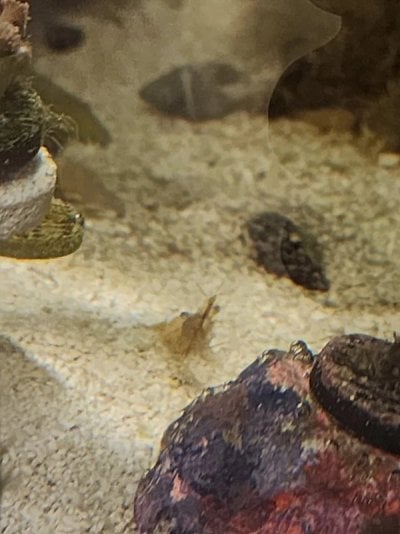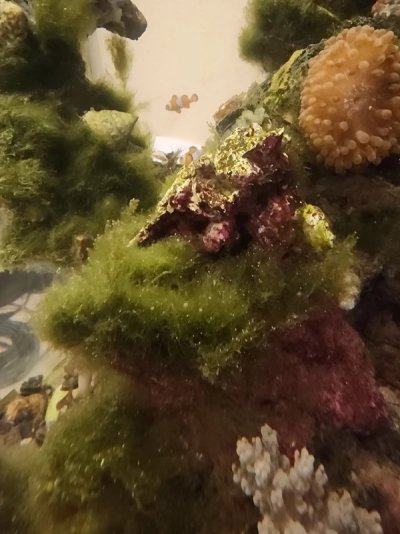How do I get an established copepod colony in my aquarium.
When we got back into the hobby after a 10 year break, mandarin dragonets were one of our must have fish. We found a lot of information that we didn’t have during our early years in the hobby, and copepods and their importance was one of the first new revelations that we discovered. After purchasing copepods several times, we started culturing our own. This is how www.reefbysteele.com came to be. At that point we didn’t know that copepods could and would reproduce, becoming a stable food source for the other reef inhabitants.
Copepods are quite resilient and hardy. That being said there are best practices to get a solid population of copepods in your tank. There are also mistakes to avoid.
First and foremost is to begin by purchasing healthy pods from a reputable source. There are many companies you can choose from. Hopefully if you have questions they will respond to your requests and provide solid information. Seek a company that guarantees live arrival and service after the sale.
Next, ensure your tank is properly prepared. Although copepods are tough, too much ammonia can definitely eliminate them or at least seriously lessen their populations. This being said, they can be one of the first life forms that can be safely added to your tank, once your tank is cycled. Due to copepods natural environment, surviving in tidal pools, ship hulls as well as open water has allowed them to become tolerant of changing water parameters. Tigriopus are routinely found thriving in tidal pools which experience changing temperatures and salinity. Acartia pods are thought to originate in tropical waters, but are now found in waters all over the planet including arctic waters, this redistribution is largely attributed to transport in ships ballast waters. Some pods spend their lives floating and swimming in open waters, while others like the Tisbe spend their life benthic (crawling in the sand bed and rocks of the reef) and others such as the Apocyclops changes as they progress through their life stages. With the exception of very specialized aquariums, standard water parameters, temperatures, flow and lighting should accommodate most pods we encounter in the market currently.
Choosing the right copepod for your system is also important. Although any copepod colony is a plus for your tank, certain pods are better depending on the needs of the other tank inhabitants. Mandarins can spend their entire day picking benthic Tisbes and Apocyclops from the rock, while sand sifting gobies draw them out of the sifting sands. Dragon wrasses, anthias, pipefish and seahorses hunt their pods out of the water column, collecting Psuedo, Acartia, Tigriopus and Apocyclops as they endlessly cruise the tank or sway effortlessly from their perch attached to strands of macro algae with their coiled tail. Their mixed life stages makes the Apocyclops my number one pick.
How and when we introduce the copepods can play a major role in how well they survive the transition, which plays a role in successfully developing a colony as well. We strongly recommend adding the copepods to the aquarium with return pumps off, and flow pumps at least reduced. Also adding the copepods at least one hour after lights out, will lessen the impact of a feeding frenzy when adding them into a stocked reef. Due to their ability to withstand changes in water parameters, matching salinity is not as important as it is with the introduction of new fish. Bringing your copepods to room temperature is advised, floating the container to match tank temperatures is even better if possible. In a system with a refugium adding 1/4-3/4 of the contents of your order can allow the copepods to breed and multiply without being preyed upon, and they should find their way throughout the system naturally. Without a refugium, if allowed to seek shelter in the sand and rocks as described above, they can and should still be able to reproduce within your system.
Finally providing your copepods with nutritious food is another important step in reaching our colonization goals. Although nuisance algae, detritus and macro algae can provide a stable food source, there is no guarantee that what they eat will provide for their top health and survival, nor that it will ensure that the pods themselves will provide the best nutritional profile when they themselves are consumed. One solid way to assist in both their health and reproduction is by dosing live phytoplankton. A constant source and supply of phytoplankton provides the copepods with the amino acids, fatty acids, and vitamins they need to be at their peak health and nutritional value.
Even if you diligently pursue and execute each of these steps, you may still fail to establish a strong colony, at least on the first try. In these cases, adding additional copepods every two weeks to a month will greatly increase your odds. This can be especially helpful in tanks stocked with the above mentioned pod hunters. Due to the small size of many of the copepods, it can be difficult to determine the populations of copepods within our systems. Generally they are easiest to detect in areas where the glass is not the cleanest, as they will congregate in areas like the back glass where we don’t clear the film algae as often. Viewing these areas at night with a concentrate light beam is beneficial.
At www.reefbysteele.com we culture and ship copepods raised on phytoplankton rich in all the nutrients needed by your tank inhabitants. With 3 or 6 species copepod blends you are sure to find a product with the right species to settle nicely into your reef. And now is the perfect time, as you can take advantage of our current offer of double the pods where we add our Harpa pods to our standard blends adding another species to expand and strengthen the opportunity of successful colonization of your copepods.
Last edited:




















